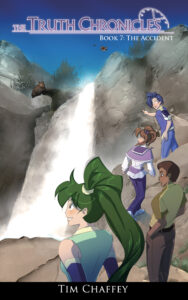Counting its previous iteration on a different platform, I have been running this blog for over ten years. It has always been my policy to moderate every comment before allowing it to appear in the comments section that follows each article. This policy has upset some people, so I decided to write this post to explain my blog’s guidelines regarding comments and the reasoning behind them.
In short, I will be more likely to approve your comment if you follow these three principles:
- Keep it civil toward me and others.
- Be respectful of my time.
- Stay on point.
The Moderation Queue
After someone leaves a comment, it immediately enters moderation. I receive an email with the content of the comment and the name and email address of the person who commented. The following email is also sent to the person who left the comment:
You recently followed one of my posts or left a comment on one of them. This means you will receive an email when new comments are posted.
If you left a comment, please understand that no comment will be posted on the site until it is approved by a moderator. This may take a few weeks, so please be patient. With rare exceptions, only civil comments that contribute to the discussion will be approved. Cursing, name-calling, and other personal attacks will not be tolerated. For more details about my policy on comments, please see www.midwestapologetics.org/blog/?p=1933.
To activate, click confirm below. If you believe this is an error, ignore this message and we’ll never bother you again.
The second paragraph in the blockquote was added on October 6, 2020. I assumed the message already included details about the comment being in moderation, but when I discovered that it didn’t, I added it to avoid any further misunderstanding.
If the commenter looks for their comment on the page, they should be able to see it immediately along with the words “Your comment is awaiting moderation” underneath their name and the date and time at which they left the comment. That should be an indication that the comment has not been deleted. I believe this goes away once the person leaves the page and returns, so that might be the reason some people think that I deleted the comment.
I try my best to moderate the comments in a timely manner, but there have been times when I need to reply to dozens of them and I simply do not have time to get to all of them immediately. For example, shortly after the Ark Encounter opened, I wrote a blog post about the privilege of taking a group of over 20 atheist and/or agnostic protesters on a tour of the Ark on opening day. That post went viral, and I received scores of comments in a couple of days. One skeptic was angry that I did not respond to him as fast as he wanted (less than 24 hours), so he spread lies about me on Facebook and on his website. Sadly, some Christians have behaved in a similar fashion.
Why Do I Moderate Comments?
There are several reasons that I moderate comments. First, it gives me an opportunity to filter out those that are inappropriate for the blog. For example, I have a spam filter set up on my blog that blocks dozens, sometimes hundreds, of spam messages per day. How many times do you check comments on news pages or blogs that are loaded with “Earn $40k per month working from home…” or something similar? Well, if any of these get past the spam filter, I can delete them and you won’t see any of these on my page. In fact, as I finished this paragraph, I received an email with a spam comment about gambling that had made it past the filter. Also, there have been some people who leave comments filled with cursing and other inappropriate language. Some skeptics have commented with extremely vile things about Jesus that no one should have to read.
Second, there are times when well-intentioned believers leave comments loaded with extremely shoddy theology. I usually don’t block those who disagree with me, but I often wait to approve these comments until I’ve had an opportunity to respond so that my readers will see at least two perspectives on that particular topic. And given the nature of some of my topics (Sons of God, Nephilim, etc.) there are plenty of comments that are quite bizarre. I am not interested in propagating wild speculations, so some of these comments simply do not make it through.
Third, there are times when I do not believe a given discussion is edifying for believers. The Bible has much to say about how believers should treat one another. Ephesians 4:15–16 instructs us to speak the truth in love, and it tells us that one of the reasons for that is for the growth and edification of the church in love. Galatians 6:10 tells us to do good to all people, especially to those who are of the household of faith.
Dear Christian brothers and sisters, we are commanded to treat one another with love and respect, but most of us fall short of this at some point. This is what prompted me to write this post. In the past week, someone left multiple comments before I had an opportunity to respond. The person misrepresented what I had written, mocked me, accused me of blasphemy, called me Satan, and much more. I have now responded to a couple of the comments, but I do not intend to approve or reply to any others, unless the person behaves in a manner that will edify the church. If you are going to automatically assume the worst about me, then there is no point in trying to have a conversation. 2 Timothy 2:23–24 states that we are not to be quarrelsome but should teach and correct with kindness and patience. Bickering amongst each other causes strife in the body of Christ and gives unbelievers a poor representation of Christ. Conversely, civil and respectful discussion of our differences can set a great example to others and lead to greater understanding.
Fourth, many of my posts have been around for several years and a few have garnered hundreds of comments. I’ve thought about closing the comments for these because so many of them coming in now simply repeat what has already been said. If you decide to comment, and you simply repeat the same argument(s) that I have already responded to multiple times in the comments section, then there is a chance I won’t approve it. Please take some time to read through some of the comments to see if someone has already made the same point or asked the same question. There is no need for you and me to “reinvent the wheel” by having the same discussion that is already in the comments.
Reading through the comments might also keep you from making the same mistakes as others. I cannot count the number of times readers accuse me of saying something that is not stated in the post. Ironically, there are times when they attack me because they think I didn’t say what they think I should have, and yet the words are right there in the post. So, please read the post carefully, peruse the comments, and don’t automatically assume the worst about someone who might happen to disagree with you.
Finally, this might seem obvious, but it needs to be stated. This is my blog, and I am not obligated to approve any comments. There are some people who seem to think that freedom of speech means that I need to approve everything they write on my blog. In fact, one person told me this in a comment that (perhaps it goes without saying) was not approved. Others seem to think that they should be able to turn my page into their own forum for advertising their personal product, ideas, or website. This is why I nearly always edit out links to products or other websites in the comments. Some leave multiple comments that are nearly as long or longer than my posts, and then they get upset if I don’t approve and/or respond to them within 12 hours. I’m sorry, but this is my blog—not yours. I have built up a certain audience over the years, and you do not have the right to come onto my page and constantly push your ideas. You can always start your own blog.
Do I Allow People to Disagree with Me?
I am open to discussions, and I’m willing to debate with those who disagree with me. But it needs to happen in a civil manner. If you just call me names and attack me personally, then it’s very likely your comment(s) will not be approved. Also, the people who are respectful of my time are more likely to be approved. This means that they discuss things at a pace I am able to keep up with. I operate this blog on my own time, and due to my many writing projects, I haven’t had a lot of free time lately. That’s why this is only the fourth post of the year. Yeah, it’s pretty pathetic, I know. I’d like to write at least one post every two weeks. Some people seem to think that I am required to give them my full attention when they write in. I’m sorry, but I am only one person (with a family, a full-time job, and a ministry on the side), and I cannot possibly keep up with multiple people who each demand hours of my time.
Read through the comments of some of my posts, and you’ll see that I’ve allowed comments from plenty of people who have disagreed with me. And in nearly every case, it’s because they have been civil and respectful of my time. Occasionally, I have approved nasty comments so that people can catch a glimpse of the things sent my way.
Also, there have been a few times where I have had to be pretty firm in my response(s) to people because they continued to violate some of the points I made earlier. One person repeatedly left very long comments after being asked not to do that. He kept making the same accusations over and over while refusing to respond to any of the points I made. Because of this, I informed him that I would not be approving any more comments from him. What did he do? He sent in a long comment the next day repeating the same exact things.
Comment in Moderation
You may have noticed the double meaning of this title. When you leave a comment on my blog, your comment will automatically go into the moderation queue. Also, if you want me to reply in a timely manner, then please comment in moderation. That is, don’t overdo it and make huge demands on my time. There have been some cases when I would be quite interested in carrying on a discussion, but the other person demands more than I can give, by writing too much and too often.
And to believers in Jesus Christ who would like to comment, please follow the guidelines set forth in this post so that our discussion will edify the church and glorify our Savior.


